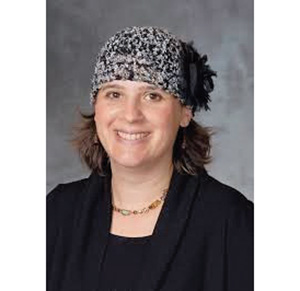
Every year, as I unpack our Pesach boxes and sort through the various children’s projects, I find myself reminiscing. As I flip through the colorful pages of the Haggadot that mark the journey that my children have taken from nursery to adulthood, I note how their drawings have become more sophisticated, their writing more legible and their divrei Torah more complex.
The Haggadah is an amazing tool. It can be used by the youngest of children and yet contain such depth that volumes of books have been written about it. As a child, I took pride in singing Ma Nishtana, waited with anticipation to eat the simanim on the Seder plate, couldn’t wait to catch Eliyahu drink from his Kiddush cup and tried so hard to stay up for our family rendition of Echad Mi Yodea. Now, as an adult and an educator, when I reflect on the Seder, I am so impressed by the authors of the Haggadah who exemplified differentiated instruction.
The Haggadah has transformed over the centuries. From the time of the Mishnah to the time of the Talmud, the Haggadah was formulated. By the eighth century, the Haggadah was written in manuscript form, as seen by the oldest Haggadah in existence, found in the geniza in Cairo. The chachamim understood the importance of differentiation years before it was part of our educational vernacular.
The Haggadah is a teacher’s guide that anticipates the needs of all learners. For visual learners, there is the Seder plate complete with edible symbols that remind us of Yetziat Mitzrayim. We even point to the symbols for Pesach, matzah and maror. For auditory learners, there are the stories that are shared aloud. The details of our journey are told in various ways using texts, songs, brachot and explanations. Kinesthetic learners benefit from the tactile experiences like the coarse charoset, the bumpy crisp matzot and the cool sensation of grape juice dripping from our fingers. Leaning to the left as you drink your cups of wine or grape juice allow us to reenact what it felt like to finally be free. If music helps one internalize what is learned, then the Haggadah contains the perfect playlist. Students who learn best by reading and writing are in luck too. In addition, the Haggadah appeals to various interests. Included in the pages of the Haggadah are in-depth studies of texts, explorations of mathematical calculations, historical accounts, dramatic retellings and culinary experiences that create olfactory memories that will last a lifetime. Students who thrive on order and routines are in luck because the entire Haggadah is based on a clear and specified outline, the Seder. And if you live outside of Eretz Yisrael and participate in two Sedarim, you have the benefit of repetition to help you remember the story of Yetziat Mitzrayim. The Haggadah appeals to all learning styles and is filled with opportunities for multisensory experiences.
Not only does the Haggadah ensure that the needs of all learners are met, but it also emphasizes the importance of curiosity and the ability to question. From the Ma Nishtana to the questions posed by the four sons to the repetition of asking “Who knows one?” we are encouraged to ask questions and discuss the possible answers. When discussing how many makkot there were, the Haggadah encourages us to wonder and use text analysis to answer a question that may seem simple. The Haggadah not only emphasizes the importance of questioning, but it also helps us reflect on how to answer questions to meet the needs of each individual. As a child, the recitation of the four sons’ questions was a chance to fight over who would get to be the chacham. Today, it is a reminder of how to help our students and children learn and grow. Not every student is a chacham, but it is our job to find a way to help each student internalize the story of Pesach.
This year, as you sit at the Seder table, think of how else you can use this amazing guide to help reach your children. Be creative. The Maggid section can seem like an eternity for some children. Try to find ways to keep them involved if they are not yet ready to sit at the table the entire time. You can send them off with a bag to fill with special treasures to take on their journey, or give them props to create a play about Yetziat Mitzrayim. Let them balance matzot on their heads as they walk around the table on their way out of Egypt. If older children have divrei Torah, take a sneak peek so you can encourage them to tell you about specific parts of the Haggadah. The Seder night is about teaching our children. Enjoy their thirst for learning, their excitement and the difficult thought-provoking questions they ask. I once had a student ask me if the Nile turned to blood from left to right, bottom to top or all at once. For years I had taught about makkat dam, but not once did I question the transformation from that perspective. By listening to our children and learning with them, we too can gain a deeper appreciation of what the Seder is all about.
By Naomi Maron
Naomi Maron is the general studies principal at Ben Porat Yosef.












